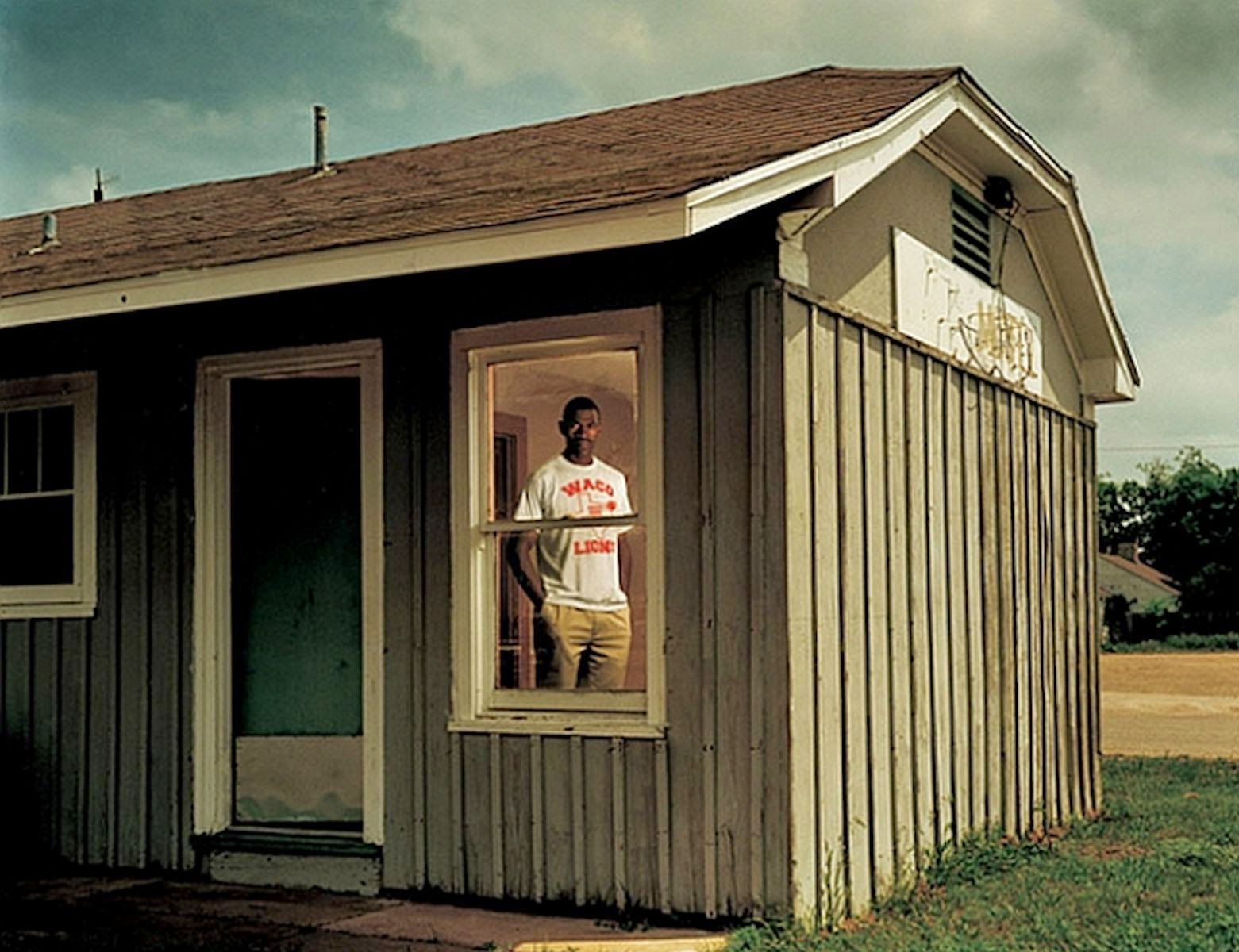TARYN SIMON (2000)
Calvin Washington, C&E Motel, Room No. 24, Waco, Texas. Larry Mayes, Scene of arrest, the Royal Inn, Gary, Indiana.
In "The Innocents" Simon photographed people who were wrongly accused, imprisoned, and eventually released from death row. Her portraits are reconstructions of places and events significant to the arrest or accusation; while building a sort of "truth" about the actual events that occurred, they reflect the lies that photographs can create. In many cases, the wrongful accusations were driven by misinterpreted photographic evidence. She talks about both the beauty and the "devastating ambiguity" of the blur between truth and fiction in photography.
ROBERT CAPA (1936)
The Falling Soldier
Like Simon's photographs, Capa's bring up questions about the inherent honesty in photographs. The first image supposedly depicts a Loyalist militiaman at the moment of his death. It is part of a much-debated series taken during the Spanish Civil War; due to some missing negatives and reconstructed locations that may not add up, it is unclear if photographs were staged. But why does it matter whether or not they were staged? Don't they communicate the same message either way? I think it's interesting how the assumption of some kind of honesty has made the "The Falling Soldier" about truth and fiction rather than about its formal qualities as a photograph or even about its content.
NIGEL TOMM
Angry Girls Portrait Photography Finds China
Tomm creates a puzzling, distorted, and sometimes uncomfortable alternate reality by physically manipulating pre-existing (often pornographic) images. I'm intrigued by the way that conventional beauty and sexuality are made grotesque and somehow darker or more "dirty" when they appear to have been discarded.
DAVID HOCKNEY (1985)
Paint Trolley
Hockney also creates alternate realities using existing objects. While his images are more clearly constructed, and cannot be mistaken for "true," they still call into question the photographer's ability to construct something false or imaginary out of things found in the real world.
HOLLY ANDRES (2006)
Gunfight: Hailey and Mikola Ashley
Andres' images remind me of the Gregory Crewdson images we looked at in class because of their cinematic lighting and over-constructed feel. The way the the reflections line up in these two photographs and the coordinating colors make them seem sort of impossible while building up the importance of the narrative that is unfolding.
JULIE BLACKMON (2008)
American Gothic
Again, the colors give this image a false, yet almost plausible, feel. Every element of the picture is so meticulously arranged - the chair and the bird are perfectly aligned with paintings on the wall, the smaller paintings are evenly spaced and frame the family, the line between the floor and the wall is exactly horizontal, the portrait of the woman is staring at the family. The way that the picture is stagnant because of its over-constructed feel makes its absurdity almost less significant, as if we're distracted by the falseness of the arrangement to the point where it's not surprising that the child is upside down and it seems perfectly natural that there should be a bird.









No comments:
Post a Comment